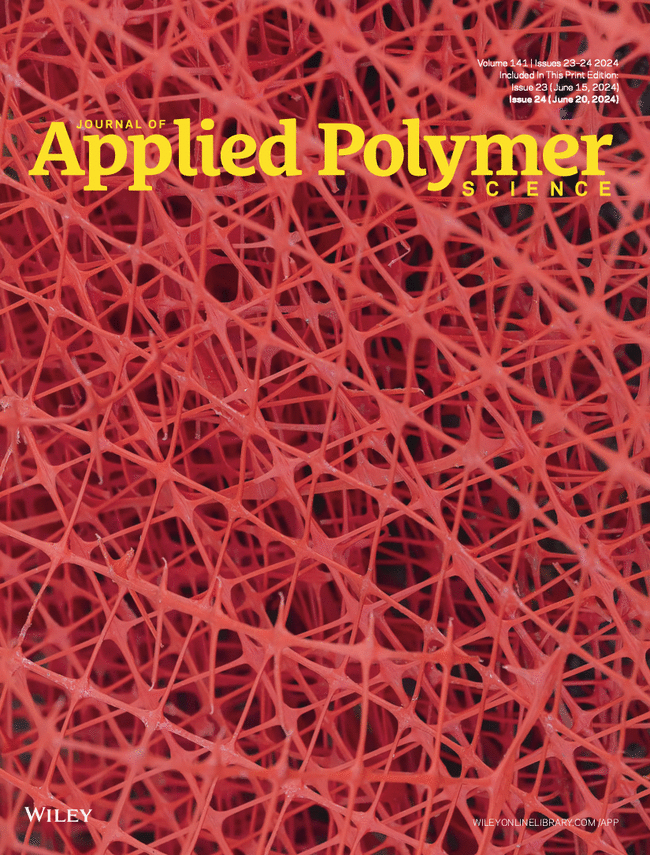In Situ Polymerized Poly(Butylene Succinate)/Organically Modified Montmorillonite Nanocomposites: Low Loading for Enhanced Melt Strength and Mechanical Properties
Abstract
Poly(butylene succinate) (PBS)/organically modified montmorillonite (OMMT) nanocomposites are prepared via in situ polymerization with low OMMT loading (0.3 wt%). This study systematically compares pure PBS and melt-compounded PBS/OMMT nanocomposites. Investigation of OMMT loadings (0.1–0.7 wt%) reveals that 0.3 wt% OMMT yields the optimal property balance. Fourier transform infrared spectroscopy (FTIR) confirms the successful synthesis of both materials. X-ray diffraction (XRD) shows the expansion of OMMT interlayer spacing from 2.28 nm to 5.93 nm, forming an intercalated structure. Scanning electron microscopy (SEM) demonstrates uniform dispersion without agglomeration. Differential scanning calorimetry (DSC) indicates enhanced crystallization: crystallization temperature (T c ) reaches 73.5°C, melting temperature (T m ) 116.4°C, melting enthalpy (ΔH m ) increases from 37.27 J·g−1 to 58.74 J·g−1, and crystallinity (X c-DSC ) rises to 53.16%. Polarized optical microscopy (POM) reveals refined spherulite size. Rheological tests show a melt flow rate (MFR) of 6.86 g·(10 min)−1 with enhanced melt strength. Tensile strength reaches 37.57 MPa (2.2% higher than pure PBS) and elongation at break achieves 67.76% (498% higher than pure PBS; 42.9% higher than melt-blended nanocomposites). This study focuses on enhancing the melt strength and mechanical properties of PBS with low-content OMMT, facilitating its processing applications and providing a theoretical basis for fully biodegradable materials.


 求助内容:
求助内容: 应助结果提醒方式:
应助结果提醒方式:


